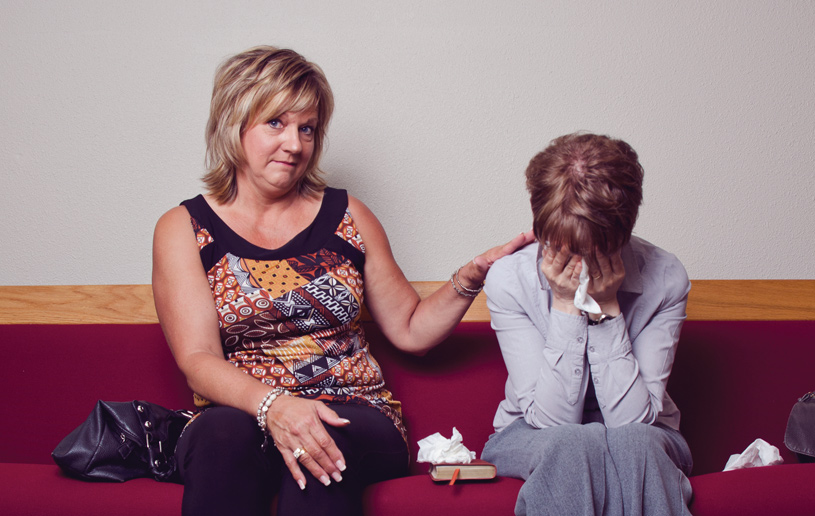
The call came at about 1:30 am. The 16-year-old son of a parishioner's friend had hanged himself. They were at the hospital and would I come? As a pastor at the time I went and ministered to the grieving woman as best I could while her dead son lay on the gurney in front of us.
I wanted to be compassionate yet found I had to detach emotionally and view the situation in a somewhat objective way. I thought I could minister better that way but to her I probably seemed cold and unfeeling.
I don't think I'm any different than you when I say I don't like to experience pain of any kind—physical, emotional, or psychological. And that extends to other people's pain. I don't like to see others hurting either.
Being compassionate or not is all about what you look at and see. The fact that we don't like seeing pain makes compassion difficult, but compassion only occurs in the context of another's pain. Therefore, it often isn't felt because we are unwilling to look at another's pain.
Faced with the reality of pain and then striving to be compassionate I realize we need to see a few things. First, we have to see and accept that pain is part of living and dying. No one is immune from suffering and pain. No one. Plato said, “Be kind, for everyone you meet is fighting a hard battle.” Job said, “Yet man is born to trouble as surely as sparks fly upward” (Job 5:7 NIV). Jesus said, “In this world you will have trouble” (John 16:33). Tears, sorrow, and pain will not be wiped away until heaven (Revelation 21:4). Until we accept that pain is part of living and dying, we cannot be compassionate.
We also learn a couple things by looking at Jesus. He saw and understood the heart of the Father God who identified Himself as “…the Lord, the compassionate and gracious God” (Exodus 34:6). Many of the parables Jesus told, such as the Lost Sheep, the Lost Coin, and the Lost Son (Luke 15) are meant to display the Father's compassionate heart. If we lack compassion it may be because we fail to understand the depth of compassion, which God has shown us. And when we comprehend that, our hearts will be softer to others' pain.
The other thing we see when looking at Jesus is how He sees people. He doesn't look superficially. He looks deeply and sees their hearts and their pain. “When he saw the crowds, he had compassion on them, because they were harassed and helpless, like sheep without a shepherd” (Matthew 9:36). He had eyes to see the hurt and then eyes to see the heart.
Too often we fail to be compassionate because we get hung up on the pain we see. We don't see past it. Job's comforters didn't have compassion. They only saw Job's pain and suffering and didn't get past it to the man himself. They thought too much and felt too little. Like too many of us they made judgments when they should have shown compassion. They analysed the suffering and then advised it was a sin problem. What they should have seen instead was the heart of a man in pain. They didn't see Job's heart. Jesus shows us to look past the pain to the heart—to the person and to the deeper need beyond simply pain relief. He sees people's plight and their need.
When we look past the pain, we see the person and engage him with our heart. That doesn't mean we ignore the pain. We acknowledge it and respect it. But we look past it to the heart of the person. Look past the suffering to the sufferer. Look past the hurt to the heart.
When we do that true compassion is evoked. Compassion happens when your heart connects with the heart of one in pain by relating to them at the heart level. When you speak, do it not from a mind that is analysing and judging, but from a heart that enters into their situation, identifies with it, and feels what it would be like to be in their situation.
To be compassionate, we must take others' feelings into consideration. We must be understanding of the other person's story. It means not being caught up in self-centredness, being willing to look at and see their pain and then look past it to the need of their heart.
Being compassionate is all about what you look at and see. As Mother Teresa said, “You can find Calcutta all over the world, if you have the eyes to see.”

